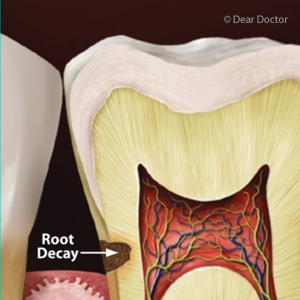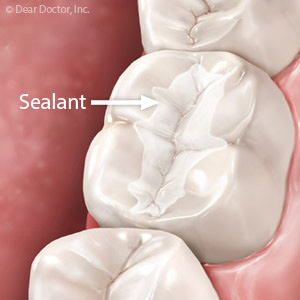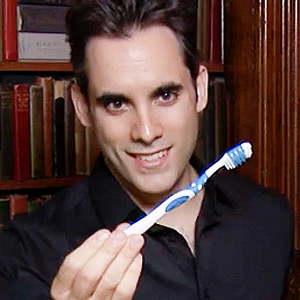

Tooth decay is a destructive oral disease, which along with periodontal (gum) disease is most responsible for tooth loss. And as you age, your disease risk goes up.
One form of decay older people often experience is root cavities. Unlike those occurring in the visible crown, root cavities often occur below the gum line and are especially destructive to tooth structure.
That’s because, unlike the crown protected by ultra-hard enamel, the roots are covered by a thin, mineralized material called cementum. Although cementum offers some protection, it can’t compare with the decay-resistant capacity of enamel.
The roots also depend on gum coverage for protection. But unfortunately, the gums can shrink back or recede, usually due to gum disease or over-aggressive brushing, and expose some of the root surface. With only the cementum to protect them, the roots can become highly susceptible to decay. If a cavity forms here, it can rapidly advance into the tooth’s interior, the pulp, weakening the tooth and increasing its risk of loss.
To stop the decay, we must treat root cavities much like we do with crown cavities: by removing any decayed structure and then filling the cavity. But root cavities are often more difficult to access depending on how far below the gum line they extend. We may need to perform minor gum surgery to expose the cavity to treat it.
But as with any form of tooth decay, the best strategy is to prevent root cavities in the first place. Your first line of defense is a daily hygiene habit of brushing and flossing to remove dental plaque, the main cause for tooth decay. You should also visit your dentist at least twice a year (or more, if recommended) for more thorough cleanings and checkups. Your dentist can also recommend or prescribe preventive rinses, or apply fluoride to at-risk tooth surfaces to strengthen them.
You should also be on the lookout for any signs of gum disease. If you see swollen, reddened or bleeding gums, see your dentist as soon as possible. Stopping possible gum recession will further reduce your risk of root cavities.
If you would like more information on the prevention and treatment of tooth decay, please contact us or schedule an appointment for a consultation. You can also learn more about this topic by reading the Dear Doctor magazine article “Root Cavities: Tooth Decay Near the Gum Line Affects Many Older Adults.”









